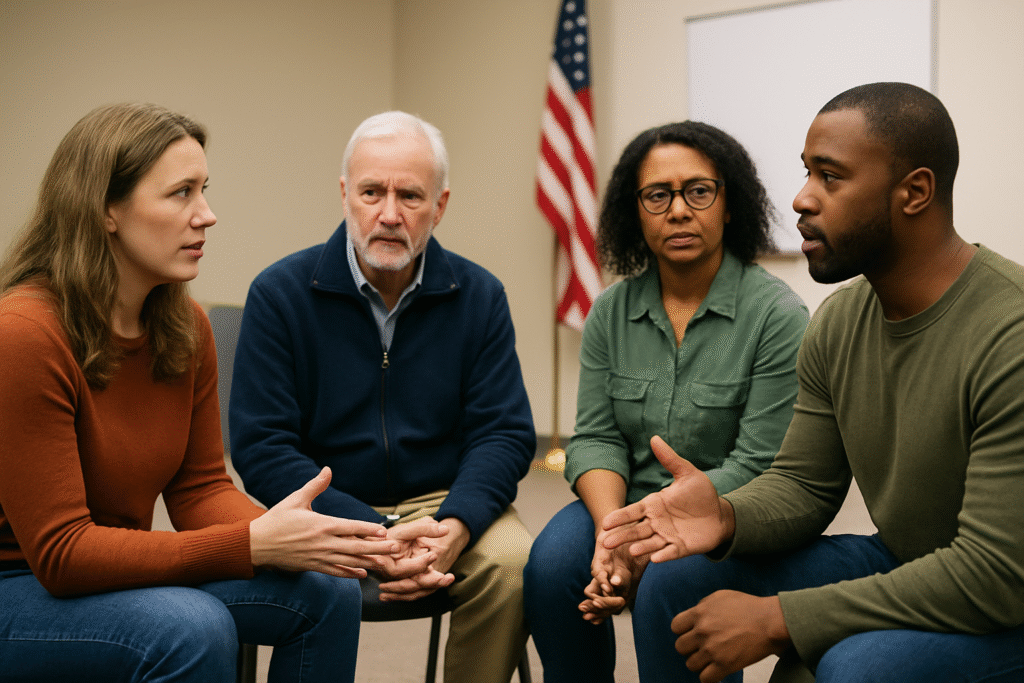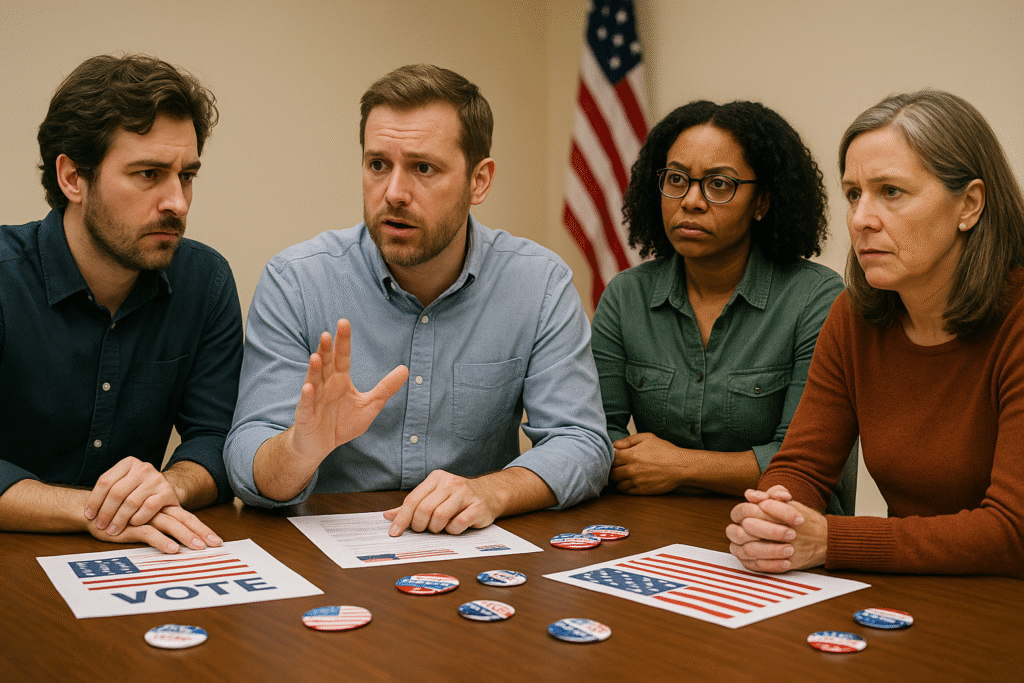The Impact of Political Polarization on Society
Political polarization is no longer just a political issue—it’s a societal challenge that affects how we talk, think, and relate to one another. In a time when opinions feel more like identities, the rift between political ideologies has grown deeper and more personal. Understanding this growing divide is the first step toward healing it.
What Is Political Polarization?
Political polarization happens when a population’s political opinions move away from the center and gravitate toward opposite extremes. Instead of shared values and compromise, people become entrenched in their views. It becomes “us versus them.” This division isn’t just about differing opinions on policy; it’s often about fundamental values, beliefs, and identities.
Imagine a political spectrum where most people once fell somewhere in the middle. Now, more people cluster at the far ends—liberal or conservative—with fewer moderates left. This isn’t just theory; studies from institutions like Pew Research have shown that Americans, for instance, are more ideologically divided now than at any point in recent history.
And it’s not just about elected officials or party leaders. Everyday conversations, family gatherings, and even social outings can be strained or avoided altogether because of political differences.
How Political Polarization Manifests in Society
Political polarization shows up everywhere—in media, in classrooms, at family dinners, and especially online. People increasingly live in “information silos,” where the news, opinions, and facts they see reflect only what they already believe. This makes it easy to demonize the other side, because you rarely hear or understand their reasoning.
A quick glance at social media shows how fast this happens. Posts supporting one party or viewpoint often receive enthusiastic support from like-minded people and immediate backlash from opponents. Civil discourse is replaced by arguments, blocking, and unfriending.
In real life, the effects can be just as severe. In some cases, family members stop speaking to one another because of political disputes. Friendships break down. At work, political tension can lower morale and productivity.
These shifts in behavior signal that political identity is becoming a core part of personal identity. When politics becomes deeply tied to who someone is, challenging their beliefs feels like attacking them personally.
Key Factors That Intensify Polarization
Several factors have accelerated the spread and depth of political polarization in recent years:
1. Media Fragmentation
Gone are the days when most people got their news from a few mainstream sources. Today, thousands of outlets—blogs, YouTube channels, partisan news networks—cater to specific viewpoints. This allows individuals to only consume information that reinforces their beliefs.
2. Social Media Algorithms
Algorithms are designed to keep users engaged. They show us more of what we already like, which means political posts and opinions that match our own are prioritized. Over time, this creates digital echo chambers.
3. Identity Politics
Political affiliation increasingly overlaps with race, religion, and cultural identity. Disagreements feel like personal attacks because politics now affects how people define themselves.
4. Economic Uncertainty
When people feel left behind economically, they’re more likely to seek someone to blame. Politicians and media can exploit this by pointing fingers at “the other side,” worsening divisions.

The Social Impact of Political Polarization
Political polarization doesn’t just affect elections—it influences how we interact, trust, and engage with each other on a daily basis. When divisions run deep, the fabric of society begins to fray in ways that aren’t always visible at first glance.
Family and Social Division
One of the most personal consequences of political polarization is how it drives wedges between friends and family members. A study by the American Enterprise Institute found that nearly one in five Americans reported that politics had hurt their relationships with family or friends. That’s a significant impact.
Conversations that once felt normal—like discussing current events—now feel like potential landmines. People avoid certain topics altogether or limit interactions with those who have opposing views. In some cases, relatives stop talking for years over political arguments. These rifts create a sense of isolation and mistrust, even among people who once shared strong bonds.
Misinformation and Information Bubbles
Another serious consequence of polarization is the spread of misinformation. When people only consume media that aligns with their beliefs, they become more susceptible to false or misleading information. Worse, they are more likely to share that information, believing it to be true.
This leads to the creation of information bubbles—environments where everyone around you thinks and talks the same way. Within these bubbles, beliefs are reinforced and opposing views are dismissed outright. As a result, it becomes harder to distinguish fact from opinion or truth from manipulation.
For example, during election cycles, false narratives about voter fraud or candidate backgrounds can spread rapidly in certain online circles. These claims can influence real-world behavior, from voting decisions to protest movements.
Threats to Democracy
Perhaps the most troubling consequence of political polarization is its effect on democracy itself. A healthy democracy depends on debate, compromise, and mutual respect. But in a deeply polarized society, opposing political parties often see each other not just as competitors, but as enemies.
When that happens, trust in institutions breaks down. People start to believe that if “their side” loses, the system must be rigged. This mindset can lead to political violence, efforts to delegitimize elections, or attempts to silence dissenting voices.
We’ve seen examples of this in recent years—from contested election results to violent demonstrations aimed at overturning democratic processes. When polarization escalates to this level, it becomes a threat not just to civility, but to the core values of democracy.
Emotional and Mental Health Consequences
Though often overlooked, the emotional toll of political polarization is real. Constant exposure to conflict, hostility, and outrage—especially online—can increase stress, anxiety, and even depression. People feel more pessimistic about the future, more distrustful of others, and more uncertain about their role in society.
In polarized environments, individuals often feel pressured to take sides. This can create inner conflict, especially for those who hold nuanced views or want to understand multiple perspectives. The emotional strain of “choosing a camp” can be overwhelming.

The Role of Media and Social Networks
Modern media—especially digital and social platforms—plays a central role in amplifying political polarization. The traditional role of journalism was to inform citizens, but in today’s fast-paced digital landscape, attention often matters more than accuracy.
Sensationalism Over Substance
Many media outlets, especially partisan ones, prioritize outrage-driven headlines because they attract clicks and views. This kind of reporting deepens divides by presenting the opposition in a dehumanized or villainous light. For instance, a news outlet may highlight the most extreme voice from the other side as representative of the whole group, reinforcing stereotypes and hostility.
Algorithm-Driven Isolation
Social media platforms are designed to show users what they’re most likely to engage with. Unfortunately, this often means reinforcing what you already believe and hiding views you might disagree with. If you like or share a post about one political party, the algorithm shows you more content from that angle—and less from the opposite view.
This creates an echo chamber where people believe their opinion is the majority and that dissenters are misinformed or malicious. As a result, instead of encouraging open discussion, these platforms deepen tribalism and mistrust.
Are There Solutions? Paths to Dialogue and Moderation
Even in the face of deep political polarization, solutions are possible. While no single fix exists, small actions taken collectively can make a big difference.
1. Promote Media Literacy
Teaching people to critically evaluate the information they consume can disrupt the cycle of misinformation. Schools, libraries, and online platforms can offer tools that help individuals check sources, understand bias, and recognize manipulative content.
2. Support Nonpartisan Journalism
Independent and fact-based journalism plays a crucial role in reducing polarization. Supporting news outlets that prioritize integrity over ideology can encourage a more balanced public conversation.
3. Encourage Civil Discourse
We need to rebuild spaces—online and offline—where people can disagree respectfully. Community forums, debate clubs, and moderated online discussions can help normalize healthy disagreement and reduce hostility.
4. Engage in Local Action
Many people feel powerless to affect national politics, but local initiatives often have a greater and more immediate impact. Participating in town halls, volunteer efforts, or school boards can bring people of different backgrounds together and build mutual understanding.
5. Redesign Social Media Algorithms
Tech companies bear responsibility for the divisiveness fostered by their platforms. Transparency and reform in how content is recommended can help expose users to a more balanced range of perspectives.
Why Understanding This Matters to Everyone
Understanding the impact of political polarization isn’t just important for politicians or scholars—it affects all of us. Whether it’s deciding who we vote for, how we treat our neighbors, or what kind of world we’re building for future generations, polarization plays a role.
If we allow polarization to continue unchecked, we risk more than discomfort—we risk losing the ability to talk to each other, to solve problems together, and to protect the democratic principles that allow for diverse voices in the first place.
But by acknowledging the problem, educating ourselves, and making small changes in how we engage with others, we can begin to bridge the divide. We don’t have to agree on everything, but we do have to agree to listen.